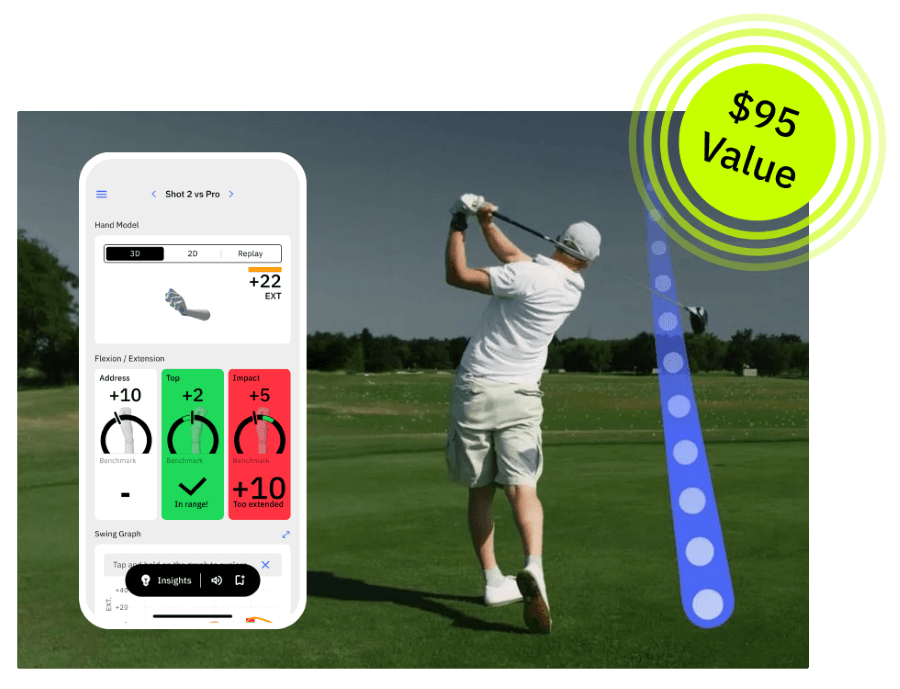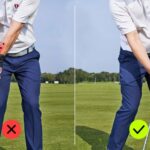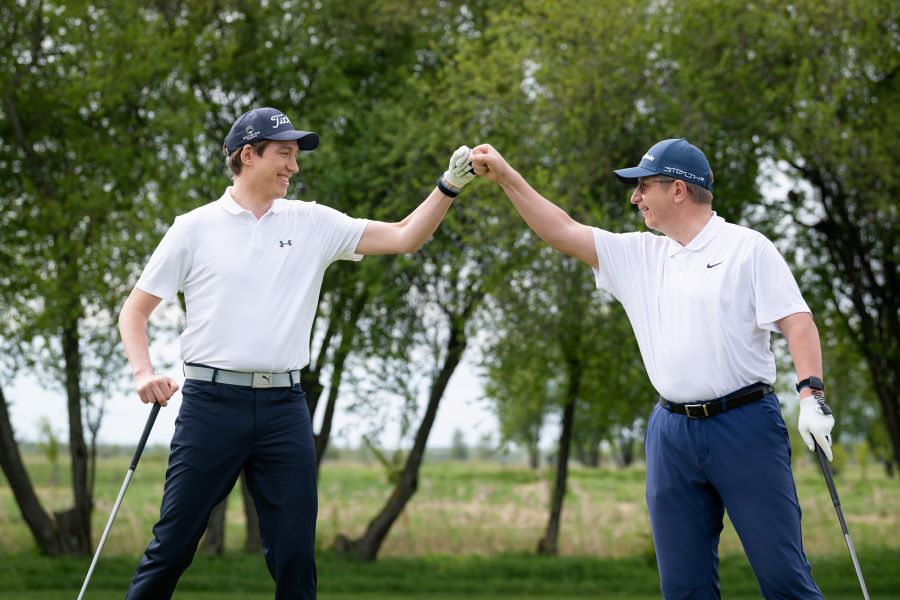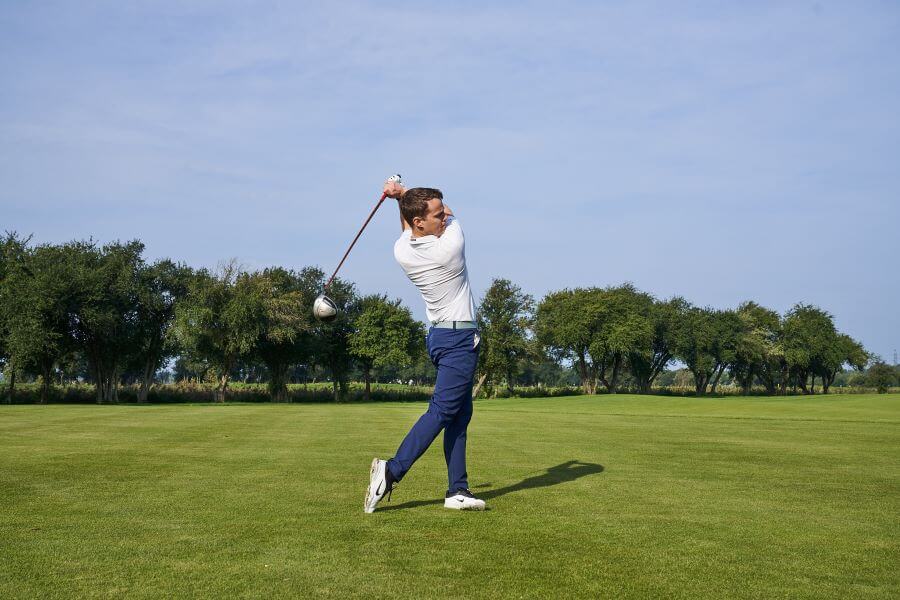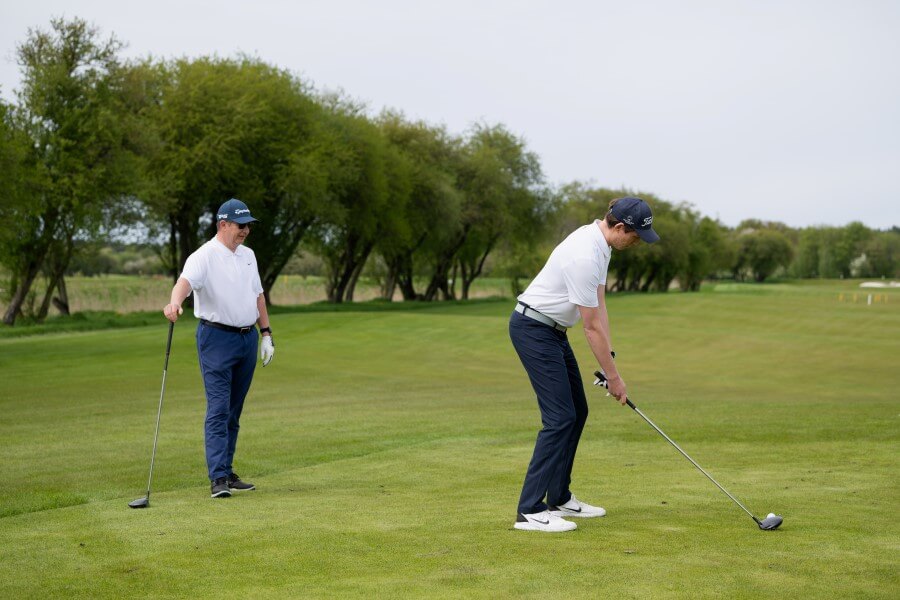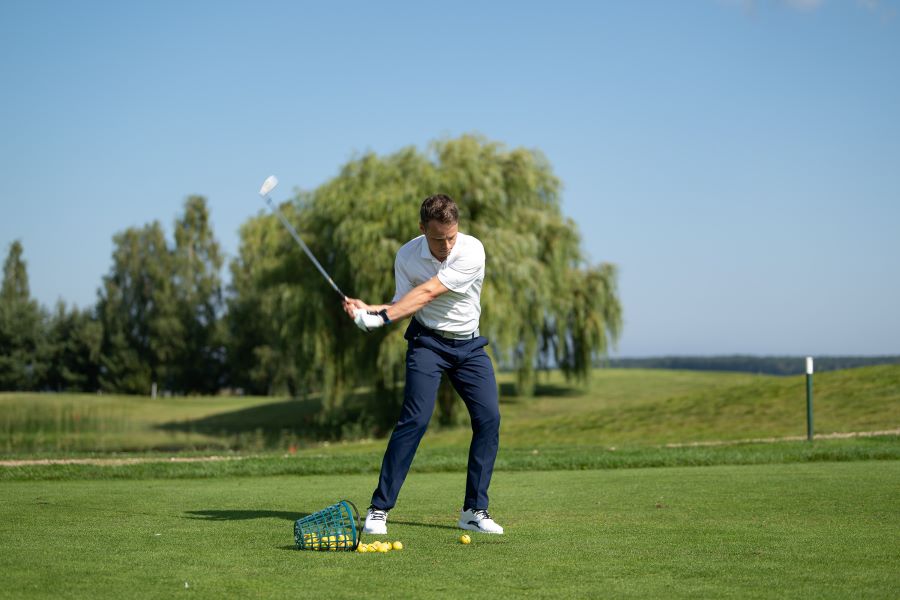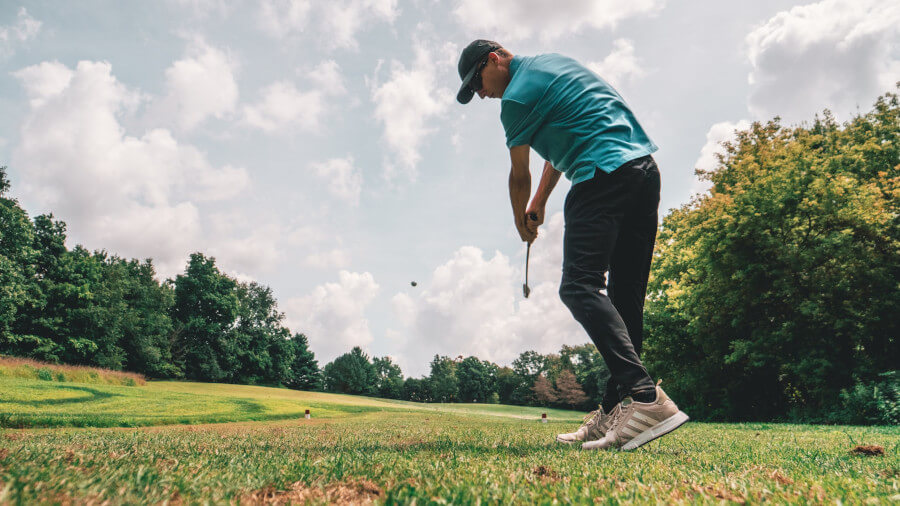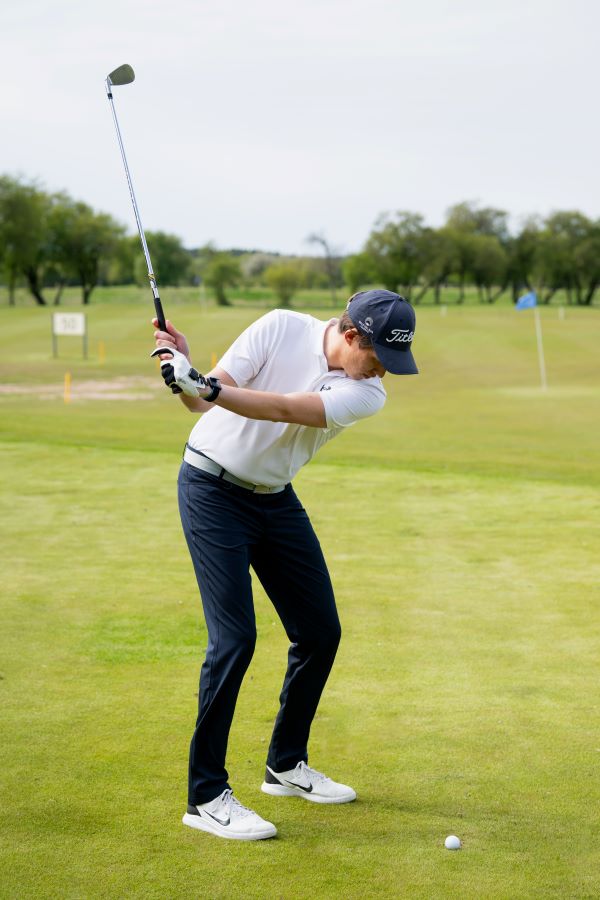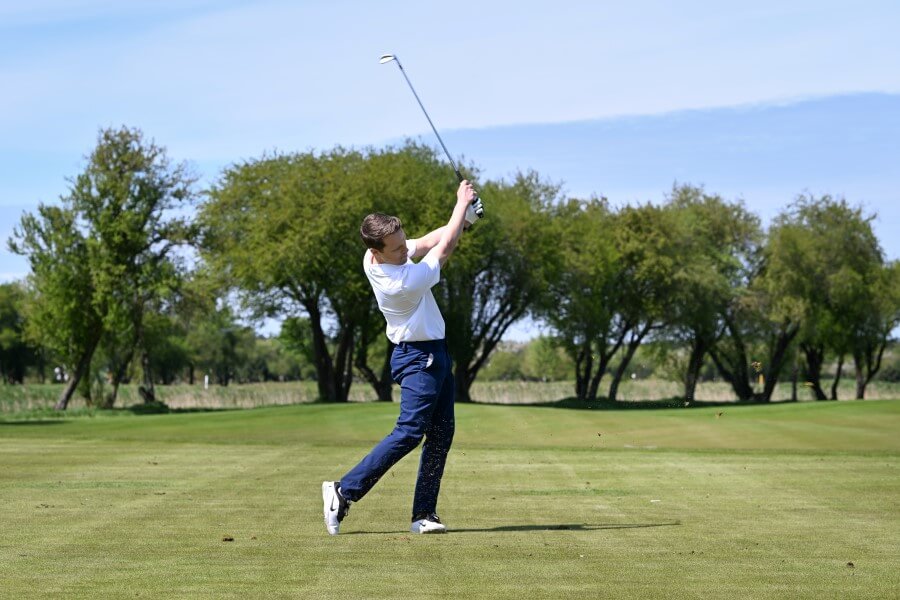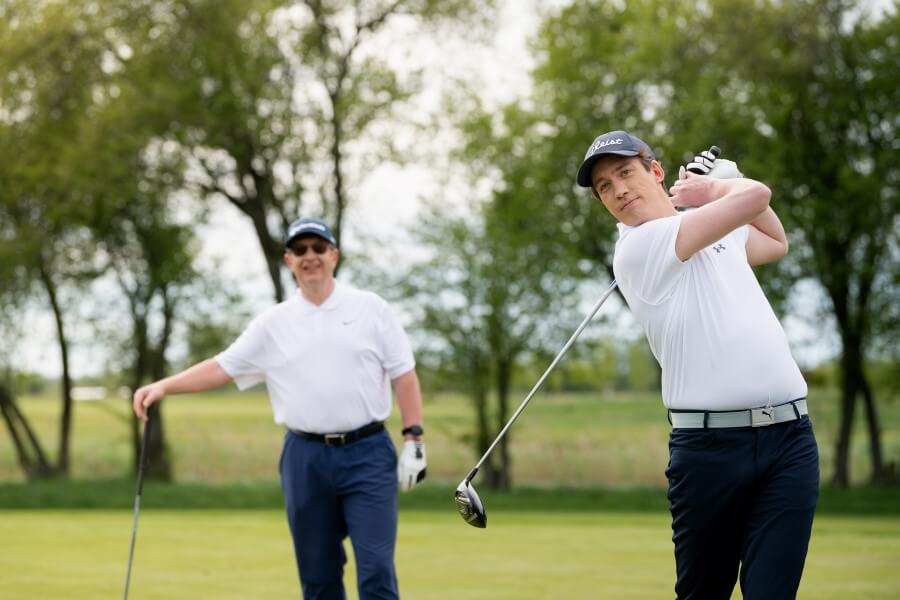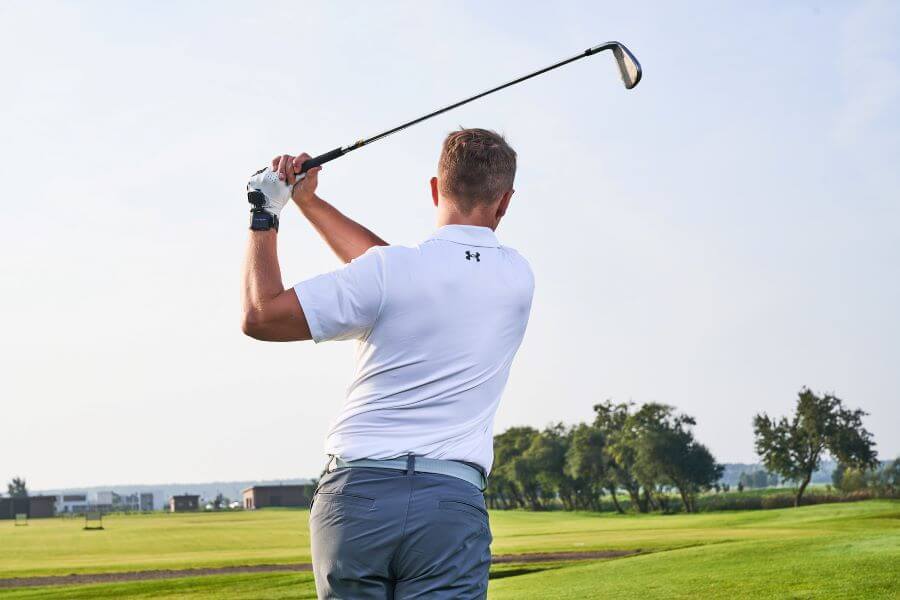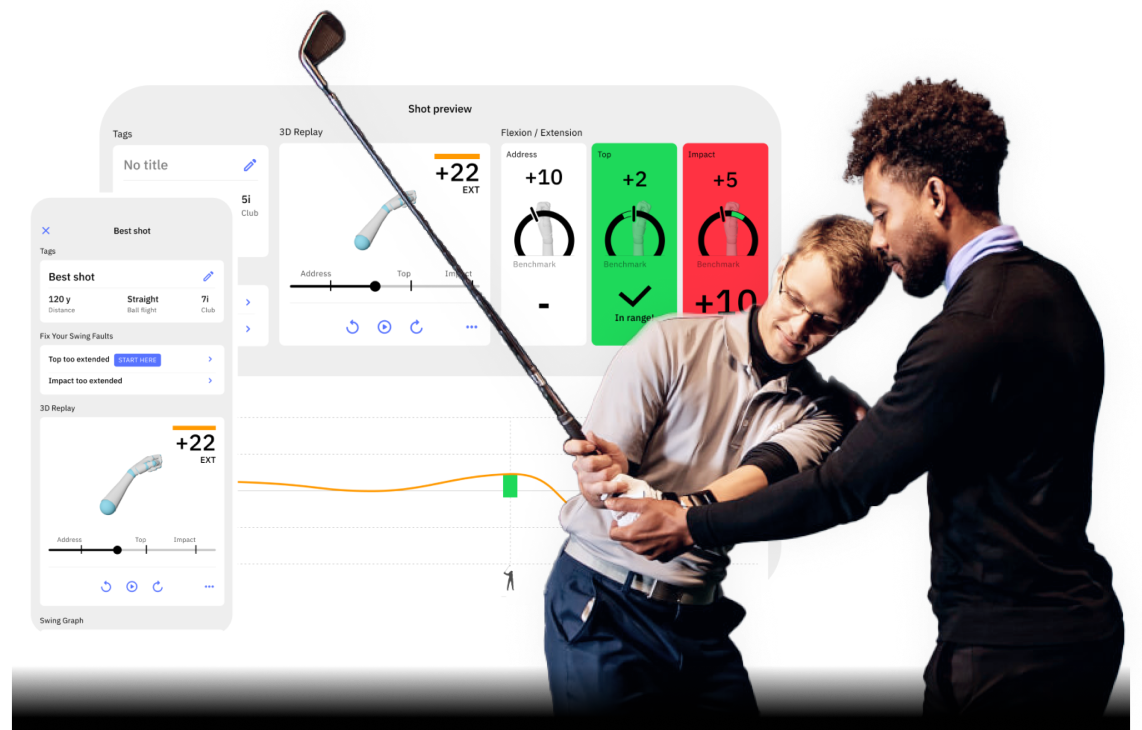Why You Should Stop Hitting Down on the Golf Ball (and What to Do Instead)
You just need to hit down on the ball. It’s a common piece of golf advice, but it’s often misunderstood.
While the intent is good, many golfers interpret “hitting down” as swinging steeply into the ball, which can lead to chunked shots, poor contact, and frustration.
There’s a better way to think about hitting down on the golf ball, one that leads to proper compression, a solid strike, and more consistent ball flight.
If you want to learn how to compress the ball instead of just hitting straight down on it, here’s the information you need.
Stop Hitting Down on the Golf Ball (Key Takeaways)
If you don’t have time to head to the range and work on this issue, here are a few of the most important points to take with you:
- Hitting down on the golf ball can cause you to lose distance and experience inconsistent ball flight.
- Golfers with slower swing speeds struggle to hit down on the ball while still keeping the club swinging through impact.
- You’ll need correct wrist angles and proper weight transfer for the club to travel through impact instead of swinging straight down into the ground.
- Practice with HackMotion on your lead wrist to shallow your plane just enough to make ball-first contact.
Contents
Understand the Hit Down Concept
Compressing the golf ball leads to better distance and control. That is how this hitting down concept came about.
However, the motion itself is not just down.
Without the swing speed, path, and angle of descent needed, trying to hit down on the ball may cause you to hit behind it or have a lower shot trajectory.
Golfers with a shallow angle of attack can still hit down and through their shot and properly compress it.
The hitting down concept can cause you to lose distance, and some people have even noticed that it can lead to injury.
5 Reasons to Stop Hitting Down on the Ball (And What to Do Instead)
If you want to compress your golf shots but have a hard time figuring out how to do that without focusing on hitting down on the ball, here are some of the reasons not to hit down on the ball, and what to do instead.
1. Too Steep of a Swing Plane
When you swing the club too steeply, you’ll hit the ground before you strike the golf ball. A slightly steeper angle of attack is not a bad thing for shorter iron shots, wedge shots, and even bunker shots.
However, for the majority of your golf swings, you need a more shallow angle of attack that still allows you to compress the ball.
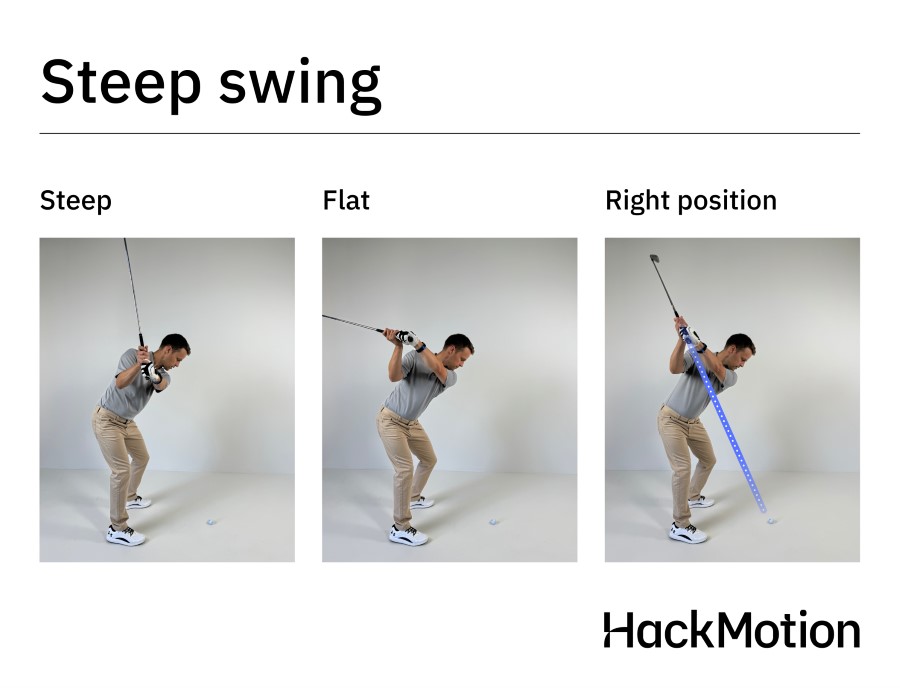
Check your wrist angle at the top of the backswing to help avoid hitting too far down and creating this steeper plane.
If the wrist angle is too extended (cupped), it causes a steeper angle of attack. If you get the wrist a little more towards flat, you’ll notice it’s easy to swing the club on the proper plane.
2. Loss of Distance
Consciously hitting down on the golf ball with a steeper angle may reduce distance. For golfers with slower swing speeds, this becomes an even bigger problem.
With no speed to pull the club through impact, all of your momentum gets pushed into the ground instead of the ball.
To prevent this, start thinking about weight transferring to the lead side and continuing your finish until all the weight is on the lead side.
Energy transfer is important in the swing, but you don’t want to transfer it all into the ground.
3. Inconsistency in Strike
Focusing on the steeper swing where you hit down on the golf ball can shift your low point too far behind the golf ball. This leads to inconsistent strikes.
You may hit an inch behind one time, half an inch the next, and never get what you need out of a shot.
Instead, you want your golf club to strike the ball first and then take a divot as it continues through the low point.
Working on finding the low point in your swing using the low point drill in this video could help with your inconsistency.
4. Incorrect Club Face Angle (No Control)
The wrists play a critical role in controlling the clubface throughout your golf swing.
One of the most common issues with golfers trying to “hit down” on the ball is that it often leads to a steep angle of attack and an open clubface at impact.
Instead of forcing a steep strike, focus on shallowing the club and rotating the clubface into a square position through impact. Here’s how to approach it more effectively:
- Start with a neutral grip. This gives you the best chance of maintaining proper wrist angles throughout the swing.
- Check your clubface at the top of the backswing. The face should generally match the angle of your lead forearm, too open here often leads to problems later.
- Initiate the downswing with a weight shift and lower body rotation. This helps the club fall into the slot and promotes a shallow, in-to-out path.
Many golfers who try to “hit down” on the ball start the downswing with their arms, aggressively chopping toward the ground.
This leads to a cupped lead wrist and an open face at impact, precisely the opposite of what you’re trying to achieve.
If you’re working on this move, wearing your HackMotion during practice can make a big difference. It gives you real-time feedback on your wrist angles, helping you achieve a square clubface at impact without overcorrecting or making unnecessary swing changes.
5. Loss of Swing Efficiency
The best golfers are those who can efficiently swing a golf club.
Think about your swing as more of a circular motion because of the rotation of your body and shoulders. You don’t swing the club up and then down into the ground.
Golfers trying to play the game like that are not efficient in their ball striking.
Drills for Better Ball Striking
If you are still working on improving your ball striking, here are a few drills that could help you.
Set the Impact Position Drill
This drill is designed to help you feel what a proper impact position actually looks and feels like.
By presetting the correct impact position before you swing, you train your body to deliver the club through the ball, not down on it.
It’s a great way to improve contact, compression, and overall swing mechanics using simple half swings.
Set the Impact Position Drill – Step by Step
- Set up to the ball as usual.
- Without moving the ball, shift your weight slightly forward (toward the lead side).
- Press your hands slightly ahead of the ball with a flat lead wrist.
- Rotate your hips open slightly to mimic impact.
- From this preset position, make a small backswing and return to that same impact shape.
- Start with half swings, focusing on solid contact and balance.
Right Arm Drill
Many golfers are told to “keep the trail elbow tucked” or “move it in front of the body,” but that’s only part of the picture.
The real key is understanding how the trail elbow and trail wrist work together. If both the elbow and wrist are in the wrong position, your clubface will stay wide open, no matter how well your elbow is placed.
This drill teaches you how to combine the correct elbow position (Position 3) with proper wrist and forearm rotation (Position 1) to square the face and deliver a powerful, consistent impact.
Right Arm Drill – Step by Step
- Set up with Position 3 in the elbow: Tuck the trail elbow slightly in front of your body, with the elbow pit facing away from you (like you’re losing an arm wrestle).
- Add Position 1 in the wrist and forearm: Rotate your trail forearm and wrist so the palm faces more downward and the clubface squares up.
- Rehearse the motion slowly: Make short swings while maintaining the “3 and 1” feeling throughout the backswing and downswing.
- Use HackMotion (optional) to monitor trail wrist extension, your goal is to maintain moderate wrist bend (extension) into impact.
Drag the Alignment Stick Drill
If you thought alignment sticks were just for aim, think again. This follow-through drill uses an alignment stick to help you feel what it means to swing through the ball, not just hit down on it.
By dragging the stick through impact and into your follow-through, you’ll learn proper body rotation, arm extension, and wrist structure, all critical for compressed, powerful ball striking.
Drag the Alignment Stick Drill – Step by Step
- Grip the alignment stick like a golf club, holding it at the very top end.
- Angle the stick behind you so it runs along the target line and trails behind your body.
- From address, drag the stick along the ground as you rotate into your follow-through.
- As you drag the stick, focus on: Shifting weight forward onto your lead leg. Maintaining arm structure—keep elbows close together and arms extended. Holding wrist angles—lead wrist stays flat or slightly flexed, trail wrist remains extended. Rotating chest upward as you move into a balanced finish with the stick parallel to the ground.
Final Thoughts
If you have been trying to hit down on the golf ball with very little luck and inconsistent results, it could be because you have exaggerated this concept.
Use your HackMotion to correct the wrist angles at the top of your backswing and again at impact to ensure you are getting the club on the right path instead of hitting it down into the ground.
